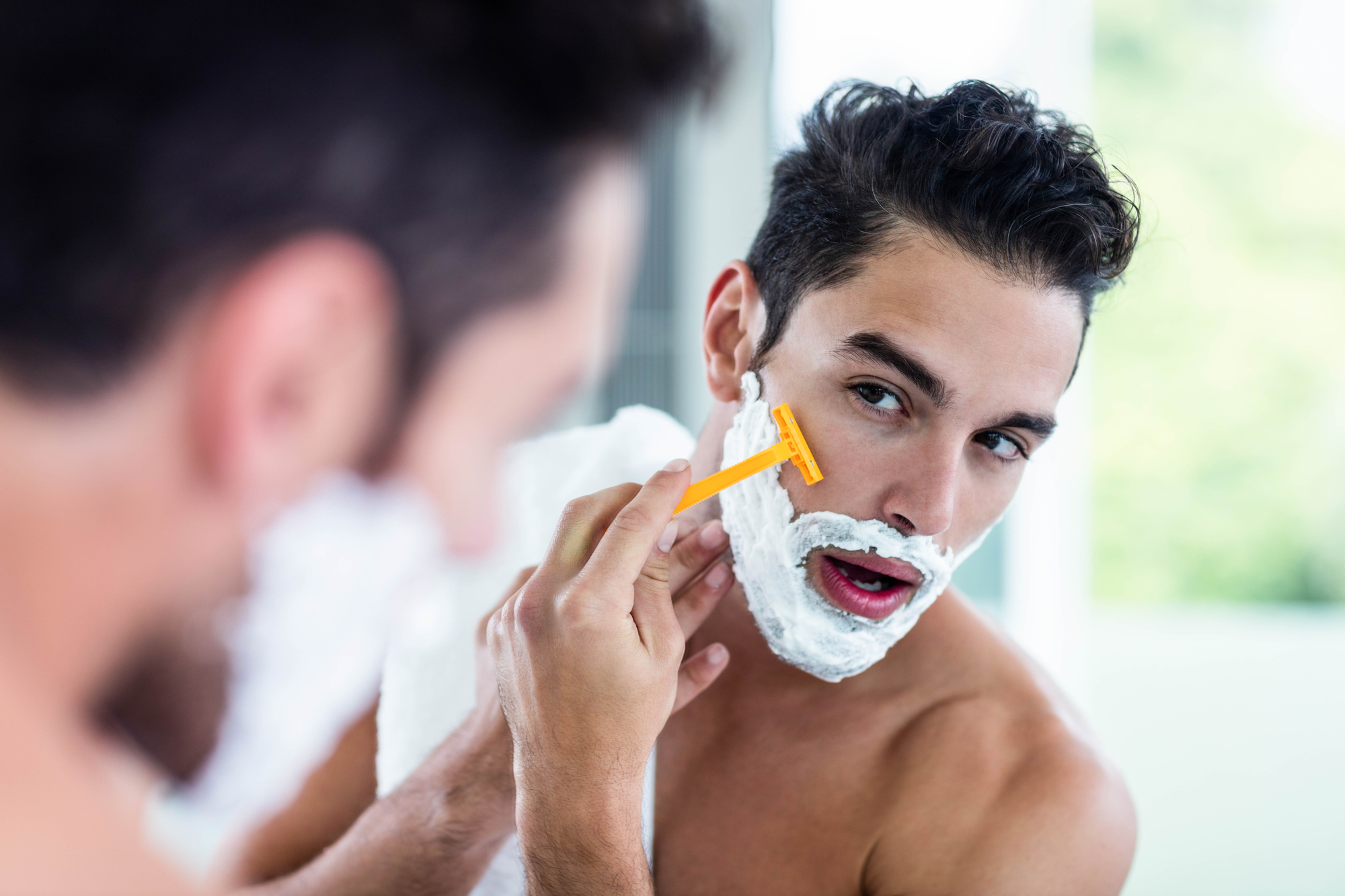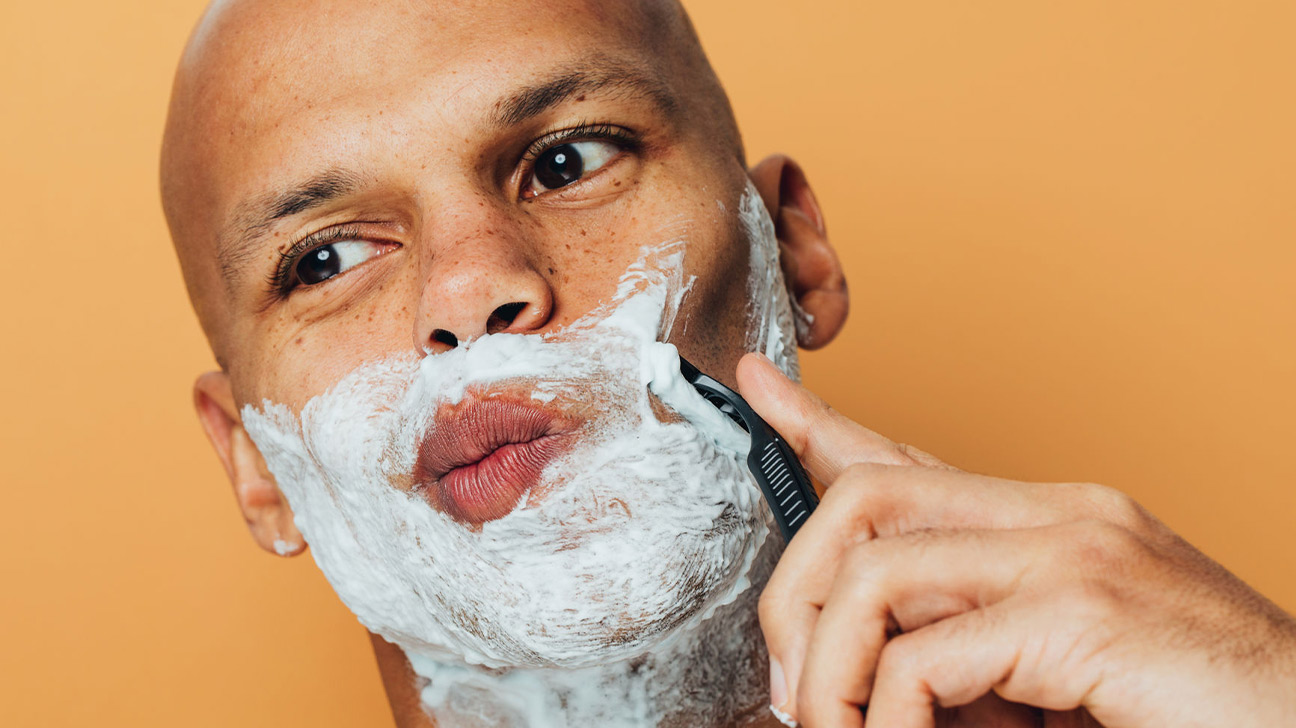Shaving Cream For Sensitive Skin - A Smoother Experience
Table of Contents
- Introduction to Shaving for Sensitive Skin
- What Exactly Is Shaving?
- Common Shaving Concerns for Delicate Skin
- How Can You Get a Good Shave with Sensitive Skin?
- Prepping Your Skin for a Better Shave
- Does Your Shaving Cream Really Make a Difference?
- Avoiding Issues Like Razor Bumps and Nicks
- A Quick Look at Shaving Tips for Sensitive Skin
Introduction to Shaving for Sensitive Skin
For many, the simple act of shaving can feel like a daily battle, especially when your skin reacts poorly to the process. That feeling of redness, bumps, or an itchy sensation afterwards is, so, something a lot of people know all too well. It turns out, getting a good, comfortable shave, particularly if you have skin that gets upset easily, really comes down to a few straightforward practices and, perhaps, the right kind of shaving cream for sensitive skin.
You see, the goal is not just to get rid of hair. It's also about making sure your skin stays happy and calm through the whole thing. A smooth shave, one that leaves your face or body feeling soft and not irritated, is actually quite possible. It just takes a little thought about how you approach it, and what you put on your skin before the blade touches it, you know.
This article will go over some ways to help make your shaving routine a more pleasant one, particularly for those with skin that needs a bit more care. We will talk about why some things work better than others and how to avoid those annoying after-shave problems, as a matter of fact.
What Exactly Is Shaving?
Shaving, in its most basic form, involves taking hair off your body. You use something with a blade, like a razor, to cut the hair down. This cut happens either right at the skin's surface or very close to it. It's a way people have managed their hair for a very, very long time, actually.
While many men use this method for facial hair, both men and women practice it for different body parts. It's a personal choice, of course, and there are many different ways people go about it. The main idea, though, stays the same: a sharp edge meets hair, and the hair comes off. That's pretty much it.
Even though the act itself seems simple, getting it right, especially when your skin tends to be a bit fussy, can be a bit more involved. It's not just about the blade, but about everything that happens before, during, and after the hair removal, so.
Common Shaving Concerns for Delicate Skin
For many, shaving can feel like a real chore, and it can even lead to discomfort. People with skin that reacts easily often face a few common issues. These can include things like redness, little bumps that pop up, or even cuts. It's not uncommon for people to struggle with this, you know, whether they are men or women.
One of the more frustrating problems is when hair removal causes painful razor bumps. Sometimes, these bumps can even lead to lasting marks on the skin. There are reports, in fact, of situations where people with certain skin conditions that cause these kinds of bumps might face serious consequences because of them. This really shows how important it is to treat your skin well during shaving, in a way.
The aim is to make the process as smooth and comfortable as possible. This means trying to keep those annoying bumps and nicks from happening. It also means reducing the chance of your skin getting upset or even picking up something unwanted. Finding what works best for your skin is key, as a matter of fact.
How Can You Get a Good Shave with Sensitive Skin?
Getting a really good, clean shave, especially when your skin is on the sensitive side, might seem like a tricky thing. But, there are some simple ways that can help you get a much smoother result. These ways are often suggested by skin care experts, and they focus on making the whole process easier on your skin, you know.
One of the first things to think about is preparing your skin before you even pick up the razor. This can make a big difference in how your skin feels afterwards. It’s all about making the hair softer and the skin ready for the blade, so.
Also, what you use to help the razor glide, like your shaving cream for sensitive skin, plays a really big part. Some things are much better for delicate skin than others. We'll look at some of these ideas to help you get that close shave without the usual problems, too it's almost.
Prepping Your Skin for a Better Shave
Preparing your skin before you shave is a very good step to take, particularly if your skin tends to get irritated. One helpful idea is to gently clean your skin first. This helps get rid of any dirt or oils that might be sitting on the surface. It makes for a cleaner path for the razor, you see.
Another tip that many find helpful is to shave near the end of your shower time. The warmth and steam from the shower help to soften the hair, making it easier for the razor to cut. Soft hair is much less likely to pull or tug, which can lead to discomfort, so.
When your hair is soft and your skin is clean, the razor can move more smoothly across the surface. This little bit of preparation can really help in getting a close shave while also being gentle on your skin. It’s a simple change that can make a big difference, in fact.
Does Your Shaving Cream Really Make a Difference?
What you put on your skin before you shave can change everything, especially for those who have skin that reacts easily. A very important piece of advice is to avoid using regular bar soap as your shaving cream. Soap can often dry out your skin, and dry skin is much more likely to get irritated or cut, you know.
Instead, look for a product specifically made for shaving, like a good shaving cream for sensitive skin. These products are made to create a nice, slippery layer between your skin and the razor. This helps the blade move smoothly without dragging, which can lead to nicks and redness, as a matter of fact.
A proper shaving cream also helps to keep the hair standing up, making it easier for the razor to catch and cut it cleanly. This means fewer passes with the blade, which is always a good thing for skin that gets upset easily. It's about giving your skin the best possible cushion and glide, basically.
Avoiding Issues Like Razor Bumps and Nicks
To get a close shave and keep your skin happy, there are a few things you can do to avoid those common problems like cuts and razor bumps. One key idea is to pay attention to how your hair grows. When you shave, it's often best to move the razor in the same direction that your hair grows, you see. Going against the grain can give a closer shave for some, but it can also cause more irritation, especially for sensitive skin.
Keeping your razor blade clean is another very important step. A dirty or dull blade can pull at hairs and cause more friction, which leads to irritation and bumps. Rinsing your blade often during your shave helps keep it working well, in fact.
Also, remember that shaving is a process that involves a mix of the right way to do things to make sure your skin feels smooth and comfortable. It’s about being gentle and thoughtful with each stroke. These simple steps can really help keep your skin looking good and feeling calm after you shave, so.
A Quick Look at Shaving Tips for Sensitive Skin
To put it simply, getting a good shave when your skin is easily bothered comes down to a few key ideas. First, always prepare your skin; think about cleaning it gently and shaving after a warm shower to soften the hair. This makes a big difference, you know.
Second, the product you use as your shaving cream for sensitive skin really matters. Steer clear of harsh soaps that can dry out your skin. Instead, pick a cream made to give your razor a smooth path, helping to keep your skin from getting upset. This helps prevent irritation and nicks, as a matter of fact.
Finally, how you actually shave counts a lot. Try to move your razor in the direction your hair grows, and always make sure your blade is clean. Following these simple ways can help you get a shave that feels good and lasts longer, reducing the chance of those annoying bumps and cuts. It’s about finding what works best for you to make shaving a more comfortable part of your personal care routine, basically.

Smooth Shave

How to Shave Without Clogging the Drain

How To Completely Shave Facial Hair at Chris Stevens blog